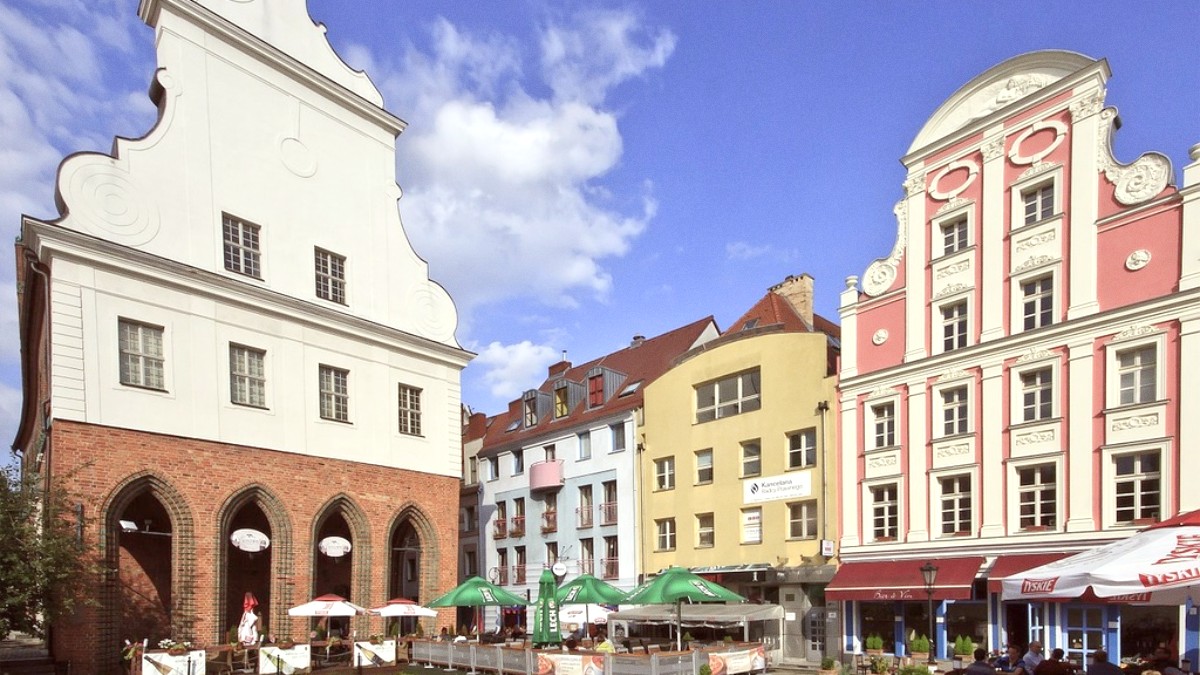
Pomerania, Poland
Polish food developed from centuries of farming and often challenging winters, leading to dishes that are warming and filling. Staples include various meats (pork, chicken, beef), potatoes, root vegetables (carrots, beets), cabbage, mushrooms, and dairy products like sour cream and cheese.
Szczecin, as a port city, historically access to fresh fish from the Odra River and the Baltic Sea. While fish is still available, the city's cuisine leans more towards national Polish staples than unique seafood dominance. The influence of German and Prussian culinary traditions, from centuries of shared history, can also be observed.
Common herbs and spices include dill, marjoram, caraway seeds, and horseradish. Sour cream (śmietana) richness to many dishes and sauces. Pickled vegetables, especially sauerkraut and pickled cucumbers, are fundamental.
Fermentation an important role in many traditional preparations, a distinct tangy flavor profile. Polish food often combines savory, sour, and sometimes subtly sweet notes.
While sharing many national traits, Pomeranian cuisine might feature more freshwater fish from the Odra and nearby lakes (though less dominant today). You might also find regional variations of potato and cabbage dishes. Szczecin's culinary scene reflects its modern, international influences.
Polish dumplings with various fillings: Ruskie (potato and cottage cheese), Z mięsem (meat), Z kapustą i grzybami (cabbage and mushrooms), Z owocami (fruit).
Found in almost every Polish restaurant, dedicated pierogarnie (pierogi restaurants), and milk bars.
Known as "Hunter's Stew," this rich, hearty dish features sauerkraut, fresh cabbage, various meats (sausage, pork, or beef), mushrooms, and spices. It cooks for a long time.
Seek it in traditional Polish restaurants, sometimes at milk bars.
A sour rye soup, distinct for its fermented rye flour base. It typically includes white sausage, potato, and a hard-boiled egg. Often served in a bread bowl.
Available in Polish restaurants, popular around Easter but served year-round.
Polish sausage is famous, found grilled from street vendors. Zapiekanka is an open-faced baguette pizza, a popular and cheap snack.
Vodka (Wódka) is famous (Żubrówka, Belvedere, Chopin). Piwo (Beer) is popular (Żywiec, Tyskie, Lech). Kompot is a non-alcoholic fruit compote. Grzane wino/piwo are warm, spiced mulled drinks, popular in colder months.
For an upscale culinary experience, Szczecin several refined restaurants.
These restaurants offer good quality food in a comfortable setting, suitable for most travelers.
Affordable eateries, street food, and markets for a local experience.
Szczecin's dining scene reflects its modern, cosmopolitan leanings. You will find a growing number of restaurants offering Italian, Asian (Sushi, Thai, Vietnamese), Middle Eastern, and other international cuisines.
Explore beyond traditional Polish fare for a global palate.
Centrum Handlowe Kaskada, a large shopping mall, includes a food court with a variety of fast food and casual dining options, both Polish and international.
Convenient for quick and varied meal choices.
Growing options, especially in larger cities. Many Polish dishes adaptable. Apps like HappyCow assist in finding.
Limited dedicated establishments. Seek international restaurants for possible halal. Kosher options are very rare.
Awareness is growing. Modern restaurants may mark options or accommodate requests. Consider a Polish phrasebook for communication.
Online forums, blogs, or apps like HappyCow for suitable dining spots. A phrasebook with dietary requests is a good idea.
Dedicated halal or kosher establishments are limited. For halal, seek international (e.g., Turkish, Arabic) restaurants. Kosher options are very rare, plan to self-cater or seek suitable vegetarian/fish dishes.
Limited options, plan accordingly.
Awareness of gluten-free, lactose-free, and other allergen requirements is growing. Some modern restaurants mark gluten-free options or accommodate requests if informed. A translated phrasebook may assist.
Communicate needs clearly with translations.
Utilize online forums, blogs, or apps like HappyCow (for vegan/vegetarian restaurants) to find suitable dining spots.
A Polish phrasebook that includes common dietary requests is very useful for direct communication.
Some local tour operators or culinary schools may Polish cooking classes. These provide a hands-on opportunity to learn to prepare traditional dishes like pierogi or bigos.
Food tours are a great way to sample various local dishes, explore markets, and learn about the cuisine's history and ingredients from a local expert.
While not directly within the city, you might find opportunities for farm visits or direct purchases from food producers in the surrounding West Pomeranian region, especially during local festivals.
Some modern restaurants might offer creative interpretations of traditional items, blending classic flavors with contemporary techniques.
Discover new twists on old favorites.
Check local event listings (e.g., on the official Szczecin tourism website) during your visit to see if any food-related events are scheduled.
Stay informed about seasonal culinary happenings.
Polish cuisine is known for its filling and comforting dishes, with a focus on local ingredients.
From fine dining to traditional milk bars and international options, Szczecin a range for all tastes.
Food tours and local markets allow for cultural engagement through food.
Don't hesitate to ask locals for their favorite dining spots. They often hidden gems not listed in guidebooks.